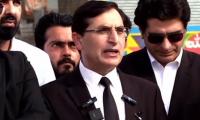It’s not going to look like it did in Cold War days,
but it will constitute a strong deterrent: Carter
BRUSSELS: Nato is ready to agree on Wednesday its boldest steps yet to deter Russia from any attack in the Baltics or eastern Europe, setting out ways to rapidly deploy air, naval and ground forces without resorting to Cold War-era military bases.
In an effort to dissuade Moscow after its 2014 annexation of Crimea, Nato defence ministers are setting up a network of new alliance outposts, forces on rotation, warehoused equipment and regular war games, all backed by a rapid-reaction force.
"We need to deploy troops and ships to deter the aggression, the threats that we have seen," British Defence Minister Michael Fallon said as he arrived for the meeting in Brussels.
"Nato means what it says, that we are ready to deter any kind of pressure."
Troop numbers, spending plans and logistics are still to be decided, but Nato officials say the decision to go ahead with such a substantial military presence on Nato's eastern borders will be one of the biggest for the alliance in decades.
That has been cemented by the United States’ decision to seek a $3.4 billion budget for European reassurance initiatives in 2017. The four-fold increase in Washington’s spending in the region will go to rotate more troops through the region and provide more tanks, armoured vehicles and other support.
It reinforces the message from US President Barack Obama in 2014 that Nato will help ensure the independence of the three Baltic states, which for decades were part of the Soviet Union.
US Defence Secretary Ash Carter, speaking to reporters travelling with him to Brussels, said it was important for all Nato allies to increase military spending.
"I’ll be looking for others in Nato to echo (us) in our investment," Carter said.
Carter said the plan aimed to move Nato to a "full deterrence posture" to thwart any aggression.
"It’s not going to look like it did back in Cold War days, but it will constitute, in today’s terms, a strong deterrent," Carter said.
In the past, the United States stationed some 300,000 troops in Europe.
Eventually, Nato could have up to 1,000 troops in each of the six countries the alliance is looking to reinforce: Lithuanian, Latvia, Estonia, Poland, Bulgaria and Romania.
They will be backed by a rapid-reaction force that includes air, naval and special operations units of up to 40,000 personnel.
The crisis in Ukraine, where the West accuses Russia of fomenting a separatist rebellion, and the Western economic sanctions on Moscow have raised concerns about a new Cold War.
Few European Nato allies openly describe Russia as a threat, for fear of antagonising the continent’s main energy supplier.
But one senior Nato official says the new deployments in Europe were driven by a consensus that the alliance had entered a new era of tension with Russia.
"This is not a thunderstorm that’s going to blow over," said the official, speaking on condition of anonymity.
"This is climate change, and we have to prepare for the long haul.
"That view was echoed by non-Nato member Georgia, which fought a five-day war with Russia in 2008 that left two of its regions occupied by Russian military.
"With the Kremlin, nothing can be excluded," Tinatin Khidasheli, Georgia’s defence minister, told Reuters.
"They cannot show weakness." Russia denies it has acted aggressively. Moscow blames the West for stirring anti-Russian feeling across the east, particularly in Georgia, Moldova and Ukraine, which it considers its historic sphere of influence.
Turkey's President Recep Tayyip Erdogan and Iraq's Prime Minister Mohammed Shia al-Sudani exchange signed agreements....
Former US president Donald Trump awaits opening arguments in his New York 'hush money' trial. — AFP NEW YORK: New...
A representational image of Chinese and German flags. — AFP/File BERLIN: Three Germans have been arrested on...
Ukrainian forces targeting a Russian position in the Kharkiv region on Sunday. — TassMOSCOW: Russia said on Monday...
A representational showing pilgrims gathered around the Kaaba at the Grand Mosque in the holy city of Makkah —...
Taiwan's eastern Hualien region was also the epicentre of a magnitude-7.4 quake in April 3, which caused landslides...







